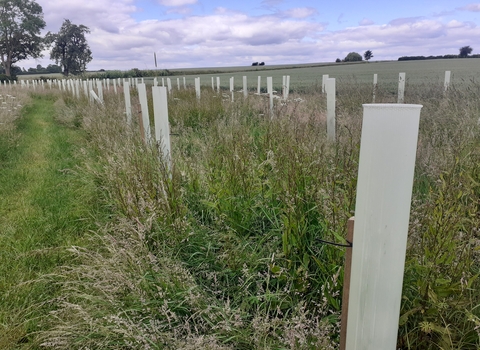The Natural Networks scheme was set up to help create and restore wildlife-rich habitats across Worcestershire. As over 110,000 hectares of the county is farmland, it’s no surprise that the project has helped a few farmers enhance some of their land for wildlife.
The Natural Networks project can’t fund projects that would be suitable for traditional farming payments, such as Countryside Stewardship grants, so farmers aren’t the mainstream audience for the project. However, even with this limitation, the project has still given advice to 11 farms, and helped to part-fund six farm projects. Some examples of our collaboration with farmers are given below.
Saltway Farm
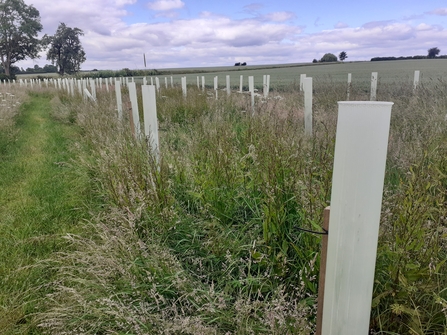
Trees planted along a field edge at Saltway Farm by Becca Bratt
The owners of Saltway Farm undertook a Natural Networks project in 2019/20. The farm is an arable and forage farm just outside of Feckenham. As well as providing management advice on ponds, grasslands and field margins, the project saw the planting of 5,640 trees and shrubs around the farm, enhancing field edge habitats and creating a new orchard. In addition, the planting of 2,320 bulbs and plug plants has provided a nectar source for pollinators throughout the spring and summer. Furthermore, the installation of 10 bird and bat boxes, including a tawny owl box and kestrel box, as well as the creation of two hibernaculum for reptiles and small mammals complete the enhancements and make the farm more wildlife-friendly.
Ryden Farm & Craycombe Estate
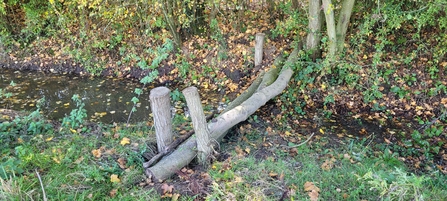
Leaky log dam installed at Ryden Farm by Becca Bratt
Lying on the banks of the River Avon between Evesham and Pershore, these two watery projects saw the enhancement of a series of ditches and reedbeds over the winter of 2022/23. Working with the Farming and Wildlife Advice Group (FWAG), Natural Networks helped part-fund the enhancement of two ditches either side of a wet pasture meadow at Ryden Farm and the creation of a reedbed extension on Craycombe Estate.
The ditch enhancements at Ryden saw the existing field-side ditches widened to create shallow sloping sides, ideal for wet vegetation like flag iris and meadowsweet. Leaky log dams were installed to help regulate the water flow at times of flooding, helping to enhance the wet pasture meadow which provides the perfect overwintering grounds for birds such as snipe and lapwing.
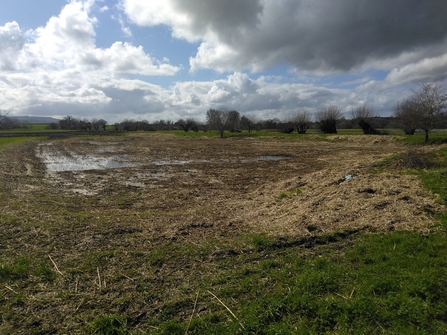
The cleared and extended reedbed at Craycombe by Finley Reynolds
The Natural Networks project at Craycombe saw the reinstallation of sluice gates to existing ditches, helping them hold more water. The existing reedbed adjacent to the ditch was enhanced and extended to create more reedbed habitat, which is ideal for reed warblers and reed bunting.
These two projects have helped enhance the wetland habitats either side of the River Avon, providing excellent habitats that work in unison with the farmers and help to increase the wetland corridor along the river.
Diamond Leaf Project
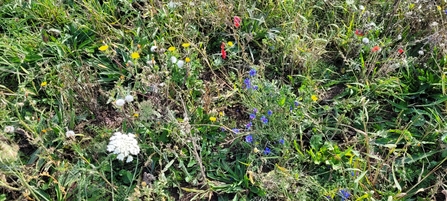
Botanical mix at New Farm by Becca Bratt
The County Council’s Diamond Leaf carbon management project is working on afforestation of sites to help reach the Council’s net zero carbon goals. Natural Networks advice was provided to two farms under this scheme to help with further biodiversity enhancements as well as tree planting guidance. New Farm, near Evesham, saw the enhancement of over 33 hectares of land, creating fields of wildflower meadow for the benefit of pollinators. The seed mixes included meadow staples such as black knapweed, wild carrot, oxeye daisy, lady’s bedstraw and yellow rattle, in keeping with grasslands and farmed landscapes in the area. Many arable "weeds”, including fat hen, field poppy and mallow, also flourished in the first year following ground disturbance. These species can be an important source of food for a range of birds and insects and so they further supplement the planted mixes.
This site is the perfect example of how pockets of land can be managed for wildlife and work towards carbon capture to inhibit climate change within actively farmed landscapes.
Lambswick Wood Farm
Bat boxes installed in the woodland by Becca Bratt
Home to the Twigs Outdoor Learning centre, a children’s outdoor education facility, Lambswick Wood Farm is a mix of traditional orchard and deciduous woodland with sheep and horse grazed pastures. Under the Natural Networks project, enhancements to the woodland saw the coppicing and thinning of a number of willow and sycamore trees, the removal of diseased ash trees and the creation of 13 log piles and lots of standing deadwood. Additionally, 34 bird boxes, 20 dormouse boxes and 10 bird boxes were installed across the site, with a further 36 honeysuckle climbers planted for the benefit of the dormice.
Wildlife education is one of the key roles of this farm and this sits alongside excellent habitat for nature within actively farmed and productive land.
Worcestershire has a diverse farming community, delivering everything from dairy cows to timber, oil seed rape to horticultural flowers. As the case studies above show, each have the potential to enhance a patch for wildlife, no matter what form of farming they undertake.
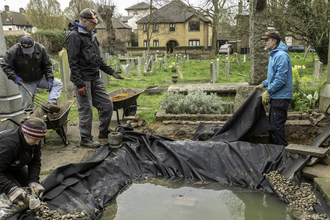
Ponds in community greenspaces
Natural Networks officer Finley discusses the importance of ponds in local greenspaces...
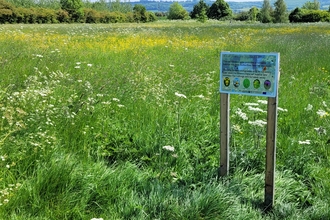
Natural Networks funding increased to encourage more wildlife-rich habitats
Natural Networks grants, available for projects which aim to create or restore wildlife-rich habitats, have been increased to cover 70%…
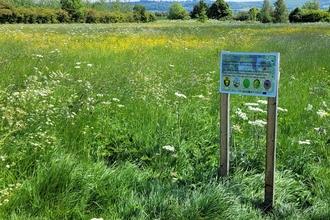
Natural Networks success
A project to connect habitats and increase the abundance of wildlife in Worcestershire is celebrating the securing of funding to extend…

